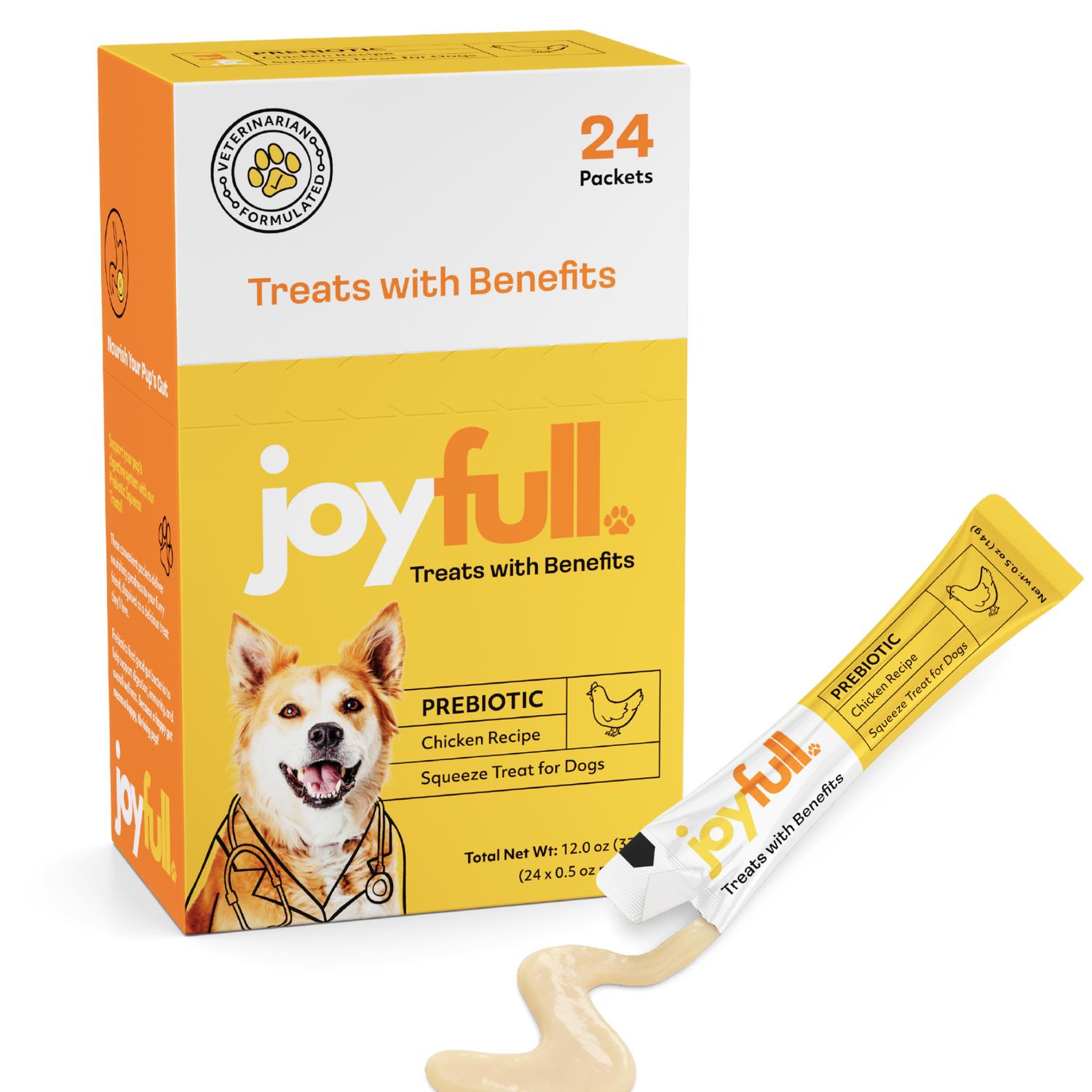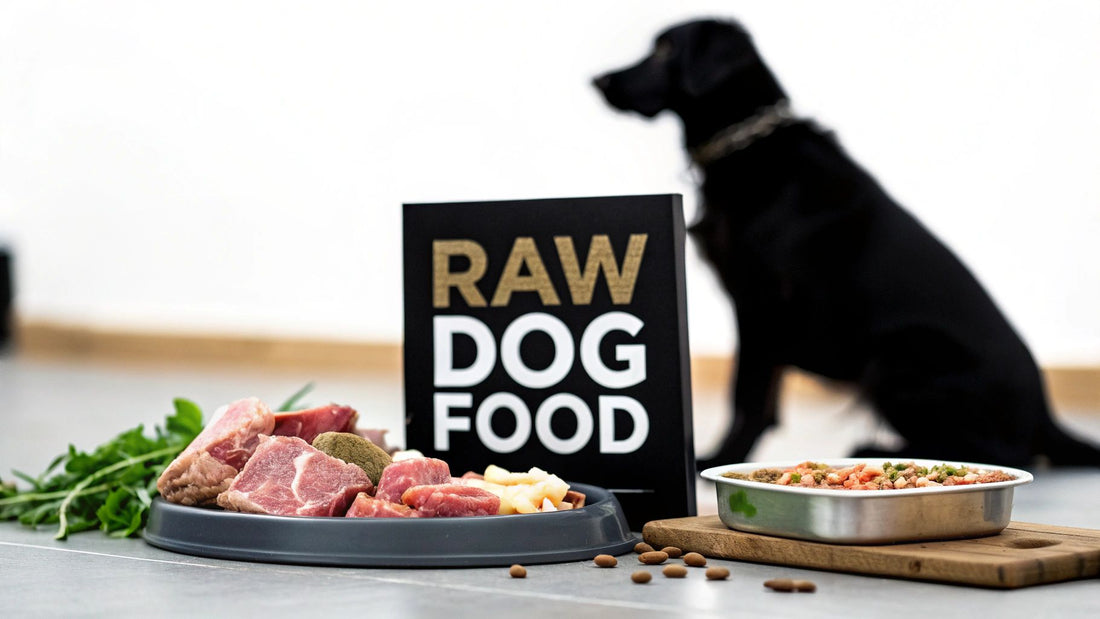
Top 10 Best Raw Dog Food Brands for Healthy Dogs
When you start looking for the best raw dog food brands, you’ll quickly see names like JoyFull, Stella & Chewy's, and Primal pop up. There's a good reason for that. These brands have built their reputation on quality ingredients and serious safety protocols, all while creating food that's closer to what a dog would naturally eat.
Is a Raw Diet Right for Your Dog?
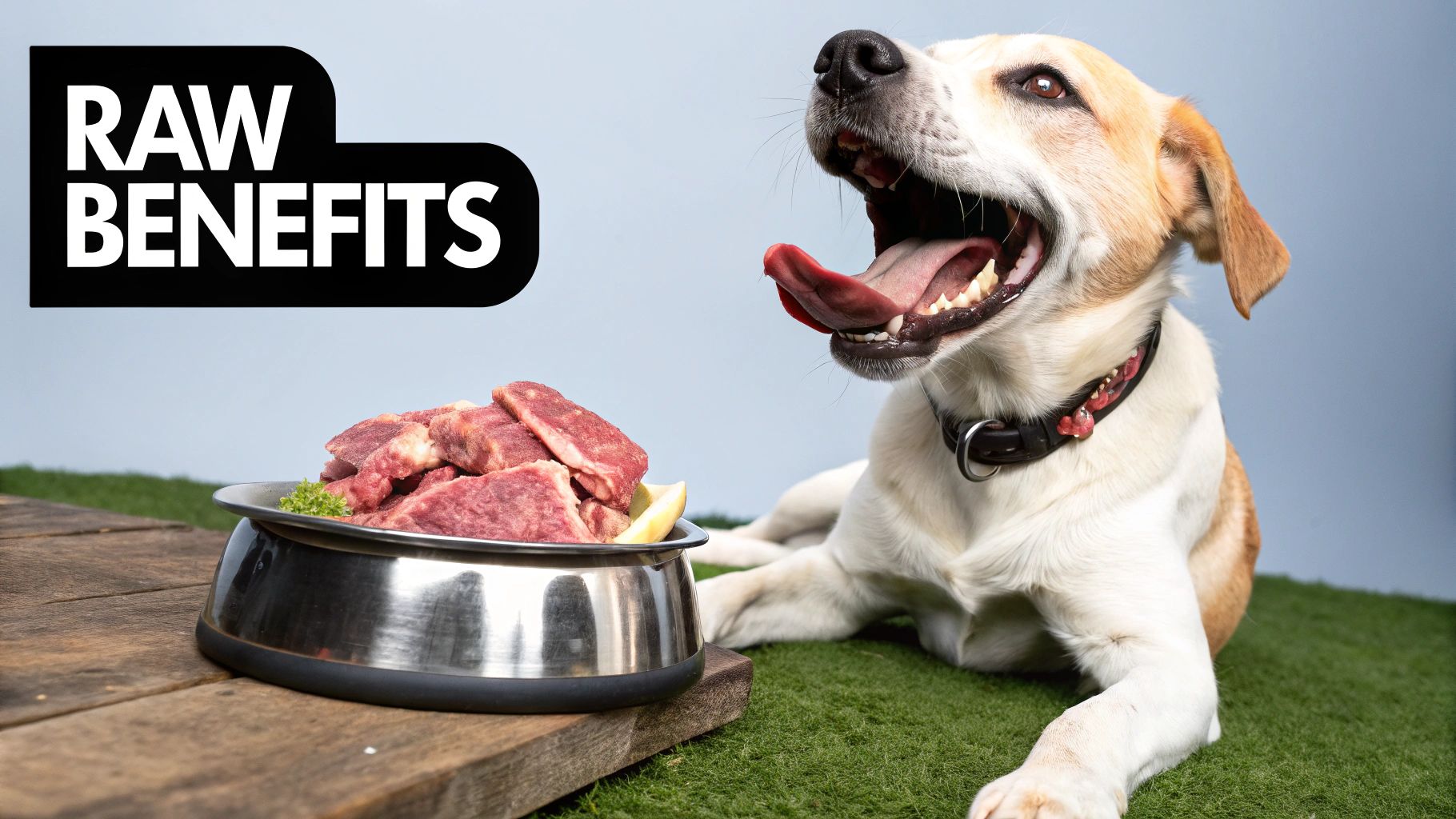
Thinking about a raw diet means looking past the usual bag of dry kibble. It’s a lot like deciding to swap out your own processed, shelf-stable meals for fresh, whole foods. For many dog owners, it's a deliberate move toward a more transparent and natural way of feeding their best friend.
At the heart of the raw food movement are a couple of core ideas that shape how the top brands craft their recipes. Getting a handle on these is the first real step in figuring out if raw feeding is a good fit for your dog.
Two Foundational Raw Feeding Models
You'll mainly hear about two popular approaches: the BARF model and the Prey Model. They’re pretty similar, but the big difference comes down to whether or not they include plants.
- BARF (Biologically Appropriate Raw Food): This model aims for balance by including meat, bones, and organs, but it also adds dog-friendly fruits and vegetables. The thinking here is to provide a wider spectrum of vitamins, minerals, and fiber, sort of like what a wild canine would get from eating the stomach contents of its prey.
- Prey Model (PMR): This approach is much more carnivore-focused, sticking strictly to what a dog would hunt and eat in the wild. It follows a classic 80/10/10 ratio: 80% muscle meat, 10% edible bone, and 10% organ meat (half of which should be liver). Plants are left out completely.
No matter the model, both are built on the same core belief: dogs do best on a diet packed with high-quality animal protein and fat.
The central idea behind raw feeding is simple: give dogs food that closely resembles what their ancestors thrived on for thousands of years. The aim is to deliver nutrients in their most natural, easy-to-digest state, steering clear of the fillers and synthetic stuff found in so many commercial dog foods.
Why Every Component Matters
Every single part of a raw diet has a crucial job to do for your dog's health. Think of it like a nutritional puzzle where you can't afford to lose a single piece.
For example, muscle meat is the powerhouse, delivering the protein and amino acids needed for strong muscles and all-day energy. Edible, ground-up bones are nature’s source of calcium and phosphorus, which are absolutely vital for a healthy skeleton. And organ meats like liver and kidney? They’re total superfoods, loaded with essential nutrients like vitamins A, D, and the B-complex vitamins.
Getting to know these components is key because it empowers you to judge a brand's quality for yourself. Once you know what to look for in dog food, you can make smarter, more confident choices for your pet's health.
Switching to raw is a big decision, no doubt about it. It takes a real commitment to understanding your dog's specific needs and making sure their meals are both complete and safe. This guide is here to give you that clarity so you can explore your options with confidence.
Weighing the Benefits and Risks of Raw Feeding
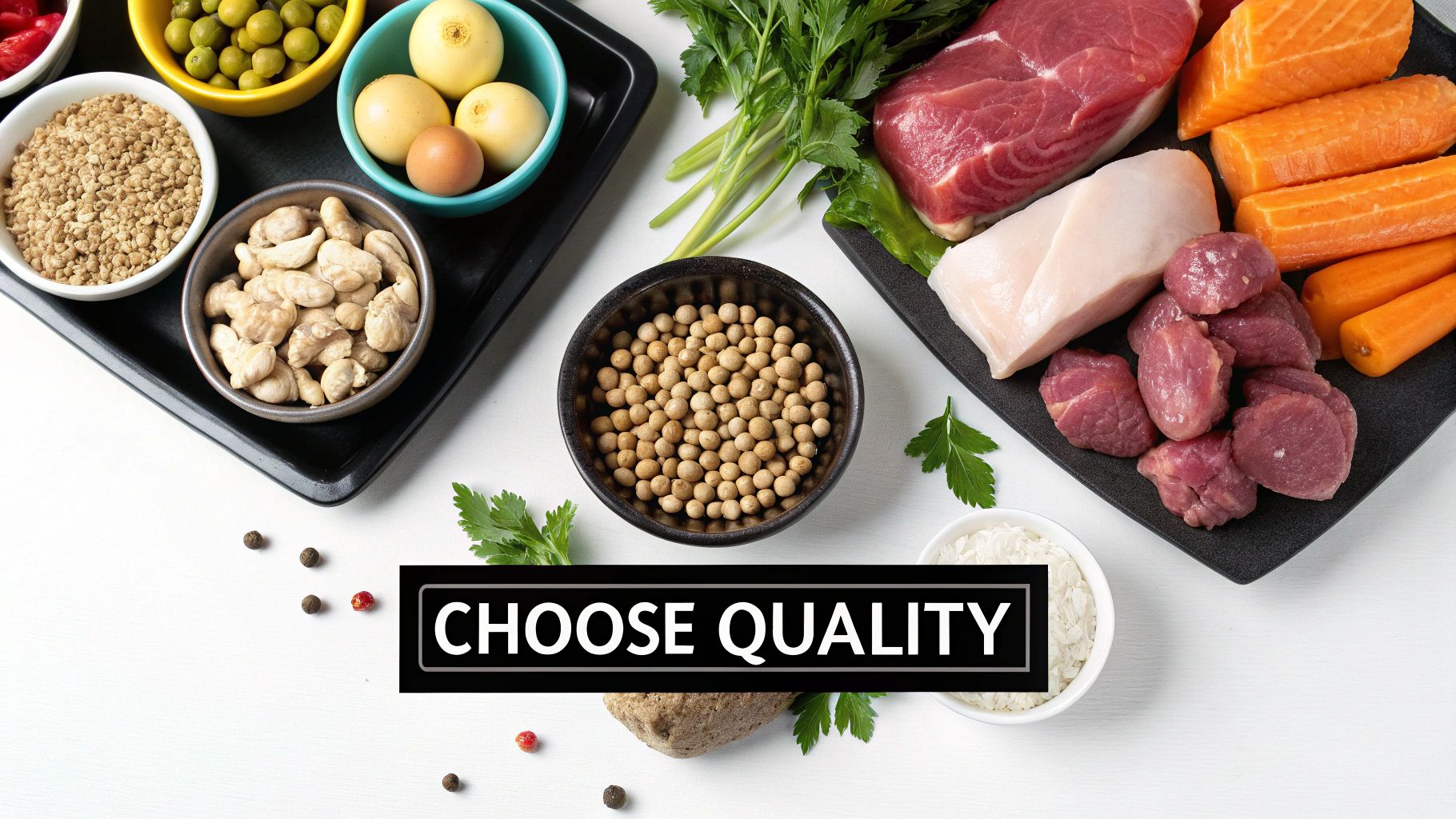
When you start looking into a raw diet for your dog, you'll find two very different sides to the story. On one side, you have a passionate community of owners who swear by it, sharing incredible stories of their dogs' transformations. On the other, you have some very real health and safety questions that need straight answers. The only way to make a good decision is to look at both sides honestly.
Many dog owners who make the switch to raw become its most vocal supporters, and for good reason. They often see compelling changes in their dog's health that are hard to ignore.
For most, the first thing they notice is the coat. It’s common to hear owners describe their dog's fur as becoming dramatically shinier, softer, and just healthier-looking overall, which is often credited to the unprocessed fatty acids in the raw meat. Many also report a big jump in energy levels—their dogs seem more vibrant and ready to play. Plus, the simple act of chewing on raw, meaty bones can do wonders for dental health by naturally scraping away tartar, leading to cleaner teeth and much better breath.
But a fair look at raw feeding means we also have to talk about the potential downsides. A raw diet isn't without its challenges, and tackling these concerns head-on is the only responsible way to move forward for your pet and your family.
Understanding the Key Concerns
The conversation around the risks of raw dog food really boils down to two main things: bacterial contamination and nutritional imbalance. While those might sound scary, they are completely manageable if you know what you’re doing.
The biggest red flag for many is the potential for harmful bacteria like Salmonella and E. coli in uncooked meat. These germs can be a risk for your dog, but they can also affect the people in your home if you’re not careful about cross-contamination on counters, bowls, and hands.
The other major concern is getting the nutrition right. Trying to create a balanced raw diet from scratch is a lot more complicated than it sounds. If it’s not put together properly, a DIY raw diet can easily miss essential vitamins and minerals, which can lead to serious health problems down the road. This is precisely why so many people opt for commercially prepared meals from the best raw dog food brands—they’ve already done the work to make sure the food is complete and balanced.
Mitigating Risks with Safe Practices
The key to feeding raw safely isn't to live in fear of these risks, but to let them guide you toward better habits. Think of it just like handling raw chicken for your own dinner; you already follow basic food safety rules. The same logic applies here.
"The conversation shouldn't be about whether raw food is 'good' or 'bad,' but rather how to do it safely. Proper handling, sourcing from reputable brands, and veterinary guidance can bridge the gap between potential risks and tangible benefits."
Here are the non-negotiable safety steps every raw feeder should follow:
- Practice Strict Kitchen Hygiene: Always, always wash your hands thoroughly with soap and water after touching raw pet food. Disinfect any surfaces, utensils, or bowls the raw meat has touched.
- Separate Food Prep: Keep your dog’s food prep separate from your own. Use dedicated cutting boards and knives just for their meals to prevent any chance of cross-contamination.
- Safe Storage: Keep the raw food frozen until you need it. Thaw it in a sealed container inside the fridge, placed on a low shelf away from human food. Never leave it out on the counter to thaw.
- Clean Up Immediately: Once your dog is done eating, pick up the bowl and wash it right away. Don’t let it sit out.
The Importance of Professional Guidance
Finally, and this is a big one, don't go it alone. Before you make a major diet change for your dog, talk to your veterinarian or a veterinary nutritionist. They can help you figure out if a raw diet is a good fit for your dog’s specific age, health status, and lifestyle.
They can also help you vet commercial brands or even help you formulate a homemade diet that won't leave any nutritional gaps. By combining your own research with their expert advice, you can weigh the pros and cons with confidence and make the best choice for your best friend.
How to Vet Commercial Raw Dog Food Brands
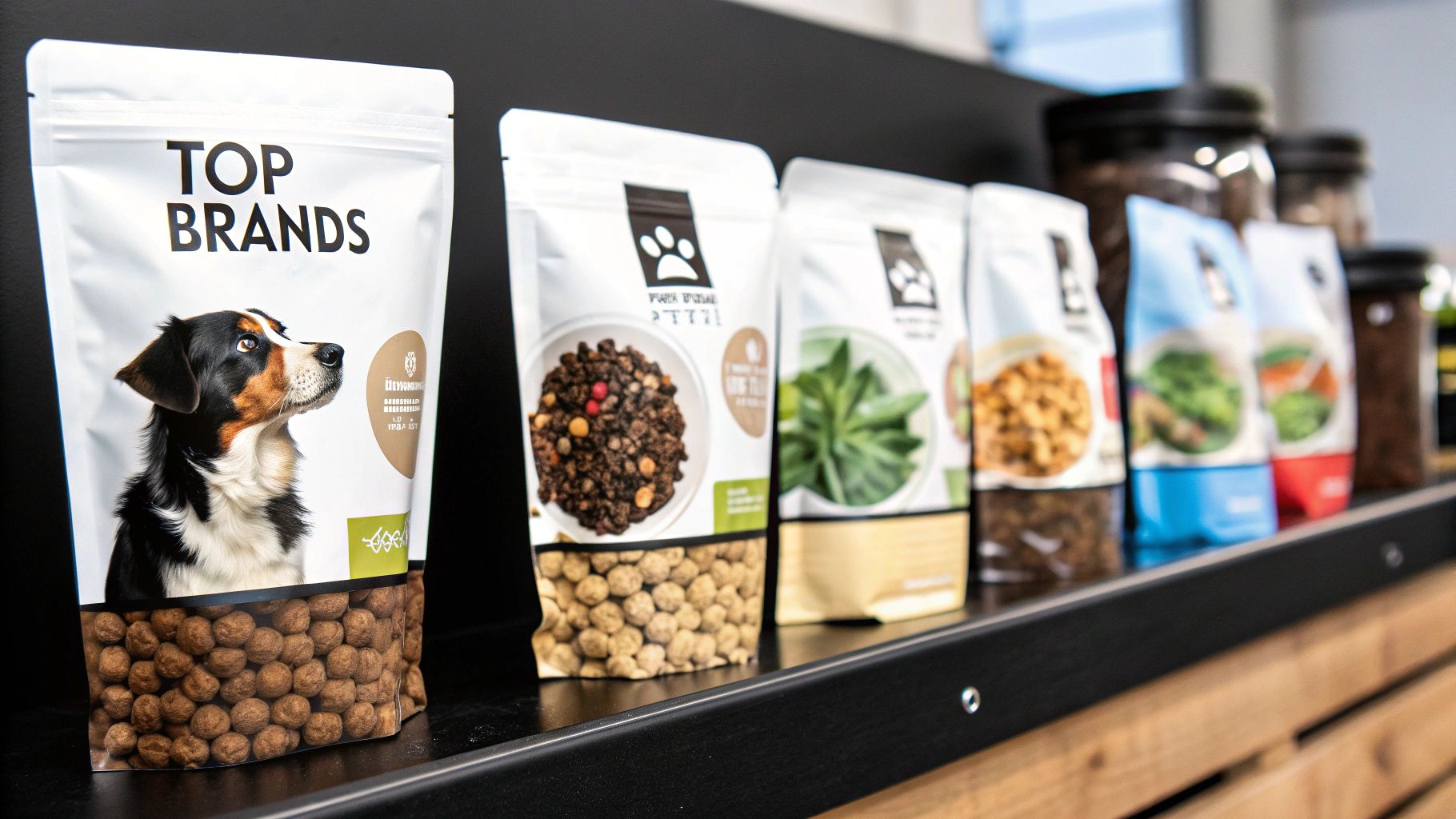
Stepping into the world of commercial raw dog food can feel like a lot to take in. With so many brands making big promises, how do you separate the genuinely great options from the clever marketing? It really comes down to looking past the flashy packaging and becoming a savvy label investigator.
Think of yourself as a detective for your dog’s dinner. You just need to know what clues to look for and which ones are red flags. This isn't about finding a single "perfect" food, but about finding the best raw dog food brand that aligns with your standards for safety, quality, and nutrition. Once you know how to vet brands properly, you can choose a product with total confidence.
Decoding the Ingredient List
The ingredient panel is where the truth lies. It’s easily the most revealing part of any package, showing you exactly what your dog will be eating. A quality brand will be proud of its ingredients and list them with total clarity.
Vague terms are a huge warning sign. If you see ingredients like "meat by-products" or "animal meal," it’s impossible to know the quality or even the source of the protein. What you want to see instead are specific, whole-food ingredients right at the top, like "grass-fed beef," "free-range chicken," or "wild-caught salmon." That kind of specificity signals transparency and a real commitment to quality sourcing.
When you’re checking out a brand, just remember this simple rule: the shorter and more understandable the ingredient list, the better. A quality raw diet doesn't need a long list of fillers, artificial preservatives, or synthetic additives to be complete.
Also, pay close attention to the order of ingredients. They’re listed by weight, so the first few items make up the bulk of the food. For any true raw diet, you should always see high-quality muscle meat, organs, and ground bone dominating the top of that list.
Understanding Safety and Processing Methods
When it comes to raw food, safety is completely non-negotiable. Reputable companies go to great lengths to minimize the risk of harmful pathogens like Salmonella and E. coli. One of the most common and effective methods they use is High-Pressure Pasteurization (HPP).
HPP is a fascinating cold pasteurization technique. It uses immense water pressure to neutralize potential pathogens without using any heat. This is a massive advantage because it preserves the raw nutrients, delicate enzymes, and natural textures of the food—all things that would be destroyed by traditional heat pasteurization. While not every top brand uses HPP, the ones that do often highlight it as a key safety feature.
If a brand doesn't use HPP, look for what they do instead. Do they conduct rigorous batch testing for pathogens? A trustworthy company will be upfront and transparent about its entire safety protocol, from sourcing to packaging. If you can't easily find this information on their website, that's a red flag.
The AAFCO Statement of Nutritional Adequacy
This is one of the most important things to look for on any dog food label. The Association of American Feed Control Officials (AAFCO) sets the nutritional standards for pet foods in the U.S. A statement on the package confirms whether the food is "complete and balanced."
Here’s what you need to look for:
- "Complete and Balanced": This is the gold standard. It means the food contains all the essential nutrients your dog needs to thrive, with no extra supplements required.
- "For All Life Stages": This indicates the food is nutritionally adequate for puppies, adults, and senior dogs.
- "For Maintenance": This means it’s formulated for adult dogs but might not be suitable for growing puppies.
If a product is labeled "for supplemental or intermittent feeding only," it is not a complete meal and shouldn't be your dog's primary diet. Choosing a food with the proper AAFCO statement is the easiest way to ensure you aren't creating nutritional gaps. Learning how to spot this is a vital skill, and you can dive deeper with our guide on how to read dog food labels.
By combining these three focus areas—ingredient transparency, safety protocols, and nutritional adequacy—you build a powerful framework for evaluation. This approach helps you move beyond marketing claims and confidently identify the best raw food for your loyal companion.
Now that you have a solid grasp of what to look for in a quality raw food, let's take a look at some of the brands that are really getting it right. This isn't just a list; it's a closer look at the big players in the raw food world—what they stand for, what they offer, and who they’re best for.
We'll dig into established names like Stella & Chewy's, Primal, and Instinct. The idea is to cut through the marketing fluff and focus on what truly matters: the types of food they make, where they get their ingredients, their safety practices, and the overall value you get for your money. By comparing them, you can find the perfect match for your dog's needs and your lifestyle.
Stella & Chewy’s: A Focus on Variety and Convenience
Stella & Chewy's is a giant in the raw food space, and for good reason. They are known for an incredible variety of both proteins and formats. You can find everything from frozen raw patties and morsels to freeze-dried dinner patties, which makes them one of the easiest brands to start with if you're new to raw feeding.
Their lineup is impressive, featuring novel proteins like rabbit, venison, and lamb. This is a huge win for owners of dogs with allergies to more common proteins like chicken or beef. The brand follows the BARF model, adding certified organic fruits and veggies to their recipes to round out the nutritional profile.
For safety, Stella & Chewy's uses High-Pressure Pasteurization (HPP) to kill off any harmful bacteria without using heat, which keeps all the raw nutrients intact. They're also transparent about their ingredient sourcing, highlighting their use of grass-fed, cage-free, and wild-caught proteins. Their products are everywhere, making them a go-to for sheer convenience.
Primal Pet Foods: An Emphasis on Complete Nutrition
Primal has carved out a niche by focusing on meticulously complete and balanced diets, also rooted in the BARF philosophy. Their formulas are thoughtfully put together, containing not just muscle meat, organs, and bone, but also a healthy mix of organic produce and unrefined supplements like organic coconut oil and cod liver oil.
They offer frozen raw nuggets, patties, and freeze-dried options, which makes measuring out meals simple and clean. Much like Stella & Chewy's, Primal is all about ethical sourcing, using proteins raised without antibiotics or steroids. A quick look at their ingredient lists shows a real dedication to whole-food nutrition.
What you'll notice with these top-tier brands is a smart blend of ancestral nutrition and modern safety. They're all trying to mimic a natural diet while using advanced techniques like HPP to make sure the food is completely safe for our pets and our homes.
Primal also relies on HPP for food safety. Their commitment to creating a perfectly balanced meal is a huge draw for pet owners who want all the benefits of raw feeding without the guesswork of balancing nutrients themselves.
Instinct: The Original Raw Brand
Many people credit Instinct as one of the pioneers that helped bring raw feeding into the mainstream. Their whole philosophy is built on the power of pure, simple nutrition, and you can see that in their recipes, which are straightforward and packed with high-quality protein.
Instinct provides both frozen and freeze-dried raw meals. One of their most popular innovations is the "Raw + Kibble" line, which acts as a fantastic bridge for dog owners who are curious about raw but not quite ready to make the full switch. This makes Instinct an excellent starting point for the "raw-curious."
Comparing the Best Raw Dog Food Brands
To help you see the differences more clearly, here's a table comparing some of the top raw dog food brands. This chart breaks down their main features to help you decide which one might be the best fit for your dog.
| Brand | Main Formats | Protein Variety | Uses HPP | Organic Options | Price Range |
|---|---|---|---|---|---|
| JoyFull | Frozen Patties, Freeze-Dried | Moderate (Beef, Chicken, Turkey) | No (Test & Hold) | Yes | $$ |
| Stella & Chewy's | Frozen, Freeze-Dried | Excellent (many novel proteins) | Yes | Yes | $$$ |
| Primal | Frozen, Freeze-Dried | Very Good (includes novel proteins) | Yes | Yes | $$$ |
| Instinct | Frozen, Freeze-Dried, Kibble+Raw | Good (standard & some novel) | Yes | No | $$-$$$ |
This comparison highlights that while all these brands offer high-quality options, they differ in key areas like protein variety, safety methods, and cost. Choosing the right one often comes down to your dog’s specific dietary needs and your budget.
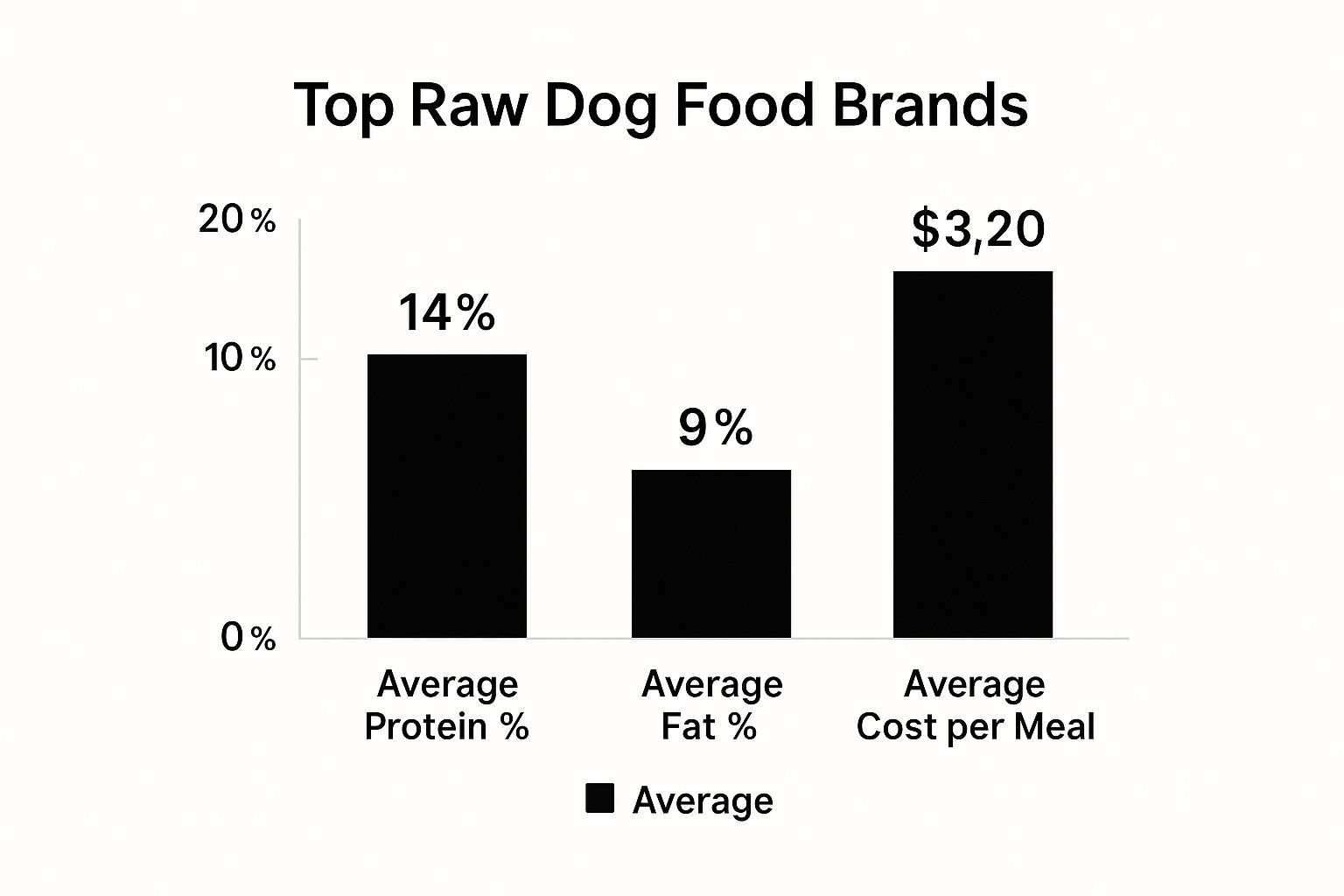
Here's a quick rundown of what makes each brand stand out:
- Stella & Chewy's: The best choice for unmatched protein variety and widespread availability. Their diverse formats suit almost any preference.
- Primal: Perfect for those seeking meticulously balanced, whole-food nutrition. The inclusion of organic produce and supplements is a huge draw for health-focused owners.
- Instinct: The ideal starting point for anyone transitioning to raw. Their blended products offer a practical and less intimidating first step.
All three brands are committed to quality sourcing, and HPP is their safety standard. Ultimately, the best choice depends on what your dog needs—whether it's a specific protein to avoid allergies or a particular format that fits your daily routine. When you're searching for the best raw dog food brands, these names consistently deliver on their promise of quality, safety, and nutrition.
The Surprising Growth of the Raw Food Market
Think about how much the human wellness aisles have exploded in your local grocery store. We're all reading labels more closely, looking for clean, natural, and minimally processed foods. It was only a matter of time before that same critical eye turned to the pet food aisle.
This exact shift in thinking is what’s fueling the incredible growth we're seeing in the raw dog food market. Many of us aren't just looking for any old bag of kibble anymore. We’re actively seeking out nutrition for our dogs that reflects the same values we have for ourselves. This trend, often called "pet humanization," is all about treating our dogs like the family members they are and wanting them to have the best.
This groundswell of consumer demand has really lit a fire under the pet food industry. Brands are now in a race to deliver safer, more convenient, and more transparently sourced raw options. And that’s fantastic news for us, because it means the market is overflowing with high-quality choices.
What Is Fueling the Boom?
This isn't just a feeling; the numbers back it up. The more educated we become about what our dogs are eating, the more our spending habits shift, and that pushes the whole industry to evolve.
You can see this evolution in the sheer variety on offer today. A decade ago, you’d be lucky to find a single freezer in a specialty pet shop with a few raw options. Now, you can find everything from frozen patties and freeze-dried nuggets to fully customized meal plans delivered right to your doorstep. This level of convenience makes it so much easier for busy pet parents to feed raw without all the guesswork of making it themselves.
A major factor in this growth is the increasing demand for natural and minimally processed pet diets. This consumer-led movement has created a market that prioritizes transparency and ingredient quality above all else.
In fact, the raw, fresh, and frozen dog food market is on track to hit around $3.17 billion by 2035. This surge is a direct result of owners actively searching for healthier alternatives to highly processed kibble. You can dive deeper into these trends and what they mean for the future of pet nutrition on futuremarketinsights.com.
The Impact on You and Your Dog
So, what does all this market growth really mean for you? In short, it means you have more power and far better choices. The intense competition among the best raw dog food brands forces them to be upfront about where their ingredients come from and how they make their food.
Here are a few direct benefits you’ll notice:
- Better Safety Standards: Top-tier brands are investing heavily in safety measures like High-Pressure Pasteurization (HPP) and strict "test and hold" programs to ensure every batch is free of harmful pathogens.
- More Diverse Options: Whether your dog has specific food sensitivities or is just a fussy eater, the variety of novel proteins like rabbit, venison, and duck has never been better.
- Increased Accessibility: What was once a hard-to-find niche product is now popping up in major pet retailers and, of course, through super-convenient home delivery services.
Understanding this bigger picture helps you see why so many fantastic options are now at your fingertips. By exploring our guide to other healthy pet food brands, you can see how this trend is improving the entire industry, putting you in the driver's seat to make the best possible choice for your dog.
How to Transition Your Dog to a Raw Diet Safely
So, you're ready to make the switch to raw. That's fantastic! But before you dive in, it’s important to remember that changing your dog's diet isn't something to be rushed. Think about it like this: your dog's digestive system has spent years processing one type of food (kibble), so throwing something completely new at it can be a bit of a shock. A little planning goes a long way.
The whole point is to make this change easy on their tummy. We want excitement, not upset stomachs. There are really two ways to go about it, and the best path for your dog will depend on their age, overall health, and just how sensitive their digestion is.
Choosing Your Transition Method
You've got two main options: go for a quick switch or take things slow and steady. Some dogs with iron stomachs can handle a fast change without blinking an eye. However, most vets and seasoned raw feeders will tell you that a gradual transition is the safest bet for preventing any digestive drama.
- The Quick Switch (Cold Turkey): This is exactly what it sounds like. You'll typically fast your dog for one meal (about 12 hours) to clear their system, and then their next meal is 100% raw. This approach can work well for young, healthy dogs. The main benefit is that it avoids mixing kibble and raw, which digest at different speeds and can sometimes cause gut confusion.
- The Gradual Introduction: This is the go-to method for most owners. It’s gentle, safe, and gives your dog’s system time to adjust. You’ll start by swapping out a small amount of their current food for raw food, slowly increasing the raw portion over a period of 7-10 days.
A popular schedule for the gradual method looks something like this: Start with 25% raw and 75% old food for a couple of days. If all is well, move to a 50/50 split. Then, shift to 75% raw and 25% old food, and finally, make the leap to 100% raw. This gives the good bacteria in your dog's gut a chance to adapt.
Safe Handling is Non-Negotiable
Okay, this is the most important part. No matter how you transition, you have to be meticulous about food safety. The rules aren't complicated, but they are absolutely essential for keeping both your dog and your family safe from bacteria like Salmonella.
Honestly, just treat raw dog food with the exact same caution you'd use for the raw chicken or ground beef you prepare for your own dinner.
- Keep it Frozen: Your supply of the best raw dog food brands should live in the freezer until you're ready to prep the next day's meal.
- Thaw Safely: Never, ever thaw raw meat on the counter. Always thaw it in the refrigerator inside a sealed container.
- Use Dedicated Utensils: It’s a smart move to have a separate cutting board, bowls, and knives that are used only for your dog's raw meals.
- Wash Everything: As soon as your dog is done eating, wash their bowl, your hands, and any prep surfaces with hot, soapy water.
Follow these simple steps, and you can serve raw food with total confidence. As you make the switch, just keep an eye on your dog. Check their energy levels and, yes, their poop. A little bit of digestive weirdness at the very beginning is normal, but it should clear up quickly. With smart planning and squeaky-clean habits, you're setting your dog up for a successful journey into raw feeding.
A Few Lingering Questions
Alright, so we've covered the what, why, and how of raw feeding. But even with all that information, it's completely normal to still have a few questions buzzing around. Most people I talk to are usually wondering about the same things: "Is this really okay for my puppy?" or "What about my old guy?" and, of course, the big one: "How much is this actually going to cost me?"
Let's dive into these common concerns. My goal is to clear up any lingering doubts so you can feel confident about whatever path you choose for your dog.
Is Raw Food Good for Puppies and Senior Dogs?
The short answer is yes, absolutely—but you have to be smart about it.
For puppies, nutrition is everything. Their little bodies are in overdrive, building bones, muscles, and organs. The single most critical factor is getting the calcium-to-phosphorus ratio just right for healthy skeletal development. This isn't something to guess at. If you're feeding a puppy raw, stick to a commercial brand that is specifically AAFCO-certified for "all life stages" or for "growth." This ensures the formula is balanced for their demanding needs.
Seniors, on the other hand, often thrive on raw diets. As dogs age, their digestion can become less efficient, and a highly digestible raw diet is much gentler on their system. The high-quality protein helps them hang on to precious muscle mass, and the high moisture content is a godsend for aging kidneys. Plus, for older dogs with sensitive teeth or missing a few, the soft texture of ground raw food makes mealtime a whole lot more comfortable.
How Does the Cost Compare to Premium Kibble?
I won't beat around the bush here: feeding a 100% raw diet is almost always more expensive than even the priciest premium kibble. It just is. The cost comes from using high-quality, often human-grade ingredients, plus the rigorous sourcing, processing, and safety testing required.
However, many long-time raw feeders see it as a "pay now or pay later" situation. They often talk about it as an investment in their dog's future health, reporting fewer vet bills for chronic problems like skin allergies, upset stomachs, and dental cleanings. Over the life of a dog, those savings can really add up.
The great thing is, it doesn't have to be all or nothing. A lot of pet parents find a happy medium by using raw food as a "topper" on high-quality kibble. This approach keeps costs down while still delivering many of the benefits of fresh, whole foods.
Are There Lightly Cooked Alternatives?
Yes, and this category has exploded in popularity for good reason. If you're intrigued by the idea of fresh food but feel a bit squeamish about handling raw meat, lightly cooked food is a fantastic option.
These companies gently cook their recipes at low temperatures—just hot enough to eliminate harmful pathogens like Salmonella but low enough to preserve most of the natural nutrients. It's a huge step up from kibble, which is blasted with extreme heat. This gives you the best of both worlds: the nutritional punch of whole foods with an extra layer of safety and convenience.
Ready to see the difference that clean, high-quality ingredients can make? JoyFull creates veterinarian-advised formulas designed for optimal pet wellness. Explore our convenient, no-BS approach to pet nutrition today. Learn more about our mission at Joyfullpet.com.
